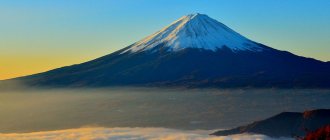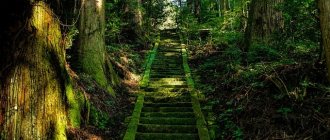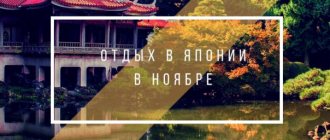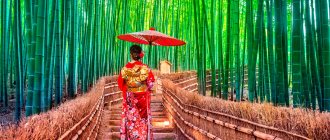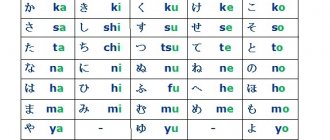HomeNews ATOR Bulletin
30.06.2020
Autumn, when momiji, or red leaf season, arrives in Japan, is one of the best times to travel to this country. Where in Japan is best to observe this colorful seasonal phenomenon, read our selection of TOP 10 places.
WHAT MAKES AUTUMN SO SPECIAL IN JAPAN
Maple leaves have special meaning for the Japanese. "Momiji" means "red leaves" in Japanese. The leaves of the kaede maple add the brightest shades to the autumn palette, which is why in everyday life the Japanese often call the maple itself momiji.
Kaede maple leaves are distinguished by deep dark red shades, which, in combination with the palette of other deciduous trees - from yellow and orange to golden brown, creates “pictures” of bizarre natural “fires”. There is no better backdrop for walks, excursions and immersion in the atmosphere of Japan.
Japan is geographically stretched from north to south, so the front of red leaves begins its journey from the northern regions of the country, gradually making its way to the south. The first to be seen are “red leaves” at the end of August in the north of Hokkaido, and one of the last to be seen on the island of Kyushu.
The Japan Meteorological Corporation, which annually creates and regularly updates a special “maple” map, will help you not to miss this miracle of nature. With this chart, you can plan your trip to Japan to capture Momiji Peak in one or more regions.
TOP 10 PLACES TO ADVISE MOMIJI
1. Mount Asahi, Hokkaido
Mount Asahi (or Asahi-Dak) is the highest mountain in Hokkaido, located in Daisetsuzan National Park. The first coming of autumn occurs on Asahi: the leaves begin to turn red at the end of August.
Best time to see red leaves: mid-September.
2. Oirase Stream, Aomori
Oirase Creek originates in Lake Towada, which is located on the border of Aomori and Akita prefectures and runs through the picturesque gorge of the same name. These fantastically beautiful places have always been loved by artists and poets, and in the fall the 14-kilometer route along the banks of the stream becomes one of the most popular places for walking.
Best time to admire the fall colors: mid to late October.
3. Yamadera, Yamagata
Yamadera is Japan's most picturesque temple, located in the mountains northeast of the city of Yamagata. The famous poet Basho visited Yamadera, who left inscriptions at its foot about the unshakable silence of these places. From the top of the temple there is a stunning view of the valley.
Best time for momiji: early November.
4. Nikko, Tochigi
Nikko, at the foot of Mount Nyoho in Tochigi Prefecture, is one of the most visited historical sites in Japan and a popular tourist destination all year round. However, traveling to Nikko in the fall is exceptional. First, the trees around Lake Chuzenji are painted in bright colors, then the foliage of historical sites, including the World Heritage site Toshogu Temple, built in the early 17th century, is covered in crimson. It is in Toshogu that the world-famous images of three monkeys and a sleeping cat are located.
Best time to admire momiji: mid to late October.
5. Rikugien Garden, Tokyo
Rikugien is one of the most beautiful Japanese gardens and the most visited place in Tokyo in the fall. There are so many visitors that during the peak autumn season the garden is open at night.
Best time for momiji: late November to early December.
6. Lake Kawaguchi, Yamanashi
Lake Kawaguchi is the largest of the Five Fuji Lakes. The lake is located within the Fuji-Hakone-Izu National Park and is listed as a UNESCO World Heritage Site. Kawaguchi, like the other four lakes, was formed as a result of a volcanic eruption about 60 thousand years ago. In autumn, the annual Kawaguchiko Autumn Leaf Festival is held on the northern shore of the lake. An excellent reason to enjoy the autumn landscapes and attend an atmospheric festival.
Best time to visit: mid-November.
7. Kurobe Gorge, Toyama
A scenic railway runs through the Kurobe Gorge. Traveling by train, you can see panoramas of the Japanese Alps and take spectacular photographs.
Best time to visit: late October to early November.
8. Seiryu-ji Tokugen-in Temple, Shiga
This tranquil temple is located in Shiga Prefecture near Osaka. The temple is surrounded by a magnificent Zen-style garden. A great place to immerse yourself in Japanese culture and admire the autumn colors.
Best time to visit: end of November.
9. Tofukuji Temple, Kyoto
Kyoto is the No. 1 destination for momiji hunting, and this old city has plenty of places to do it. Experts recommend visiting the Tofukuji Temple, where there is a garden with an area of more than 20 thousand square meters. m and offers panoramic views of the Tsutenkyo Bridge.
Best time to visit: end of November.
10. Kenroku-en Park , Ishikawa
Kenroku-en Park is considered one of the three most famous landscape gardens in Japan, and it is one of the best tourist attractions in the city of Kanazawa. The garden recreates 4 different landscapes for each season. It's worth coming to Kenroku-en in the fall to see the seasonal landscape.
Best time: end of November.
Traveling alone with your dreams
Kyoto, Day 2. Gion - Yasaka Shrine - Maruyama Park - Chionin Temple - Shorenin Temple - Nanzenji Temple - Eikan-do Temple - Philosopher's Path - Honen-in Temple - Shinnyodo Temple - Kurodani Temple
We spent our second full day walking around the eastern outskirts of Kyoto. We walked through deserted Gion, the empty Shijo Dori Avenue, so crowded with people in the evening, through the peaceful garden around Yasaka Shrine, where in the morning there were neither the smells of the night market nor the lanterns glowing in the dark. In Maruyama we admired the red maples and a busily walking heron.
Chionin Temple temple complex seemed large and beautiful, but the main temple was covered in scaffolding and closed for restoration. So we just walked right through the territory.
Before entering the Shorenin Temple we came across a beautiful red maple tree at the very peak of its “blooming”. We came to visit him two days later (on the third), and all the leaves had already withered and turned pale - beauty is fleeting.
I read reviews about the beauty and peaceful atmosphere of Shorenin Temple, so we decided to pay 500 yen and go inside. The architecture and interiors are very laconic; in the garden, the peak of red maples has mostly passed. But it was nice that there were no crowds around, in the temple there was a photo shoot of the newlyweds dressed in beautiful kimonos, and Fedya happily stretched his bones and crawled on the mats of the temple premises.
Nanzenji temple complex - large, atmospheric and very popular with bus tourists. We looked at the massive gates, at the temple, inside of which a religious ceremony was taking place, at the beautiful maples. We walked along a huge aqueduct - to the left of it there is a quiet temple, and then a picturesque path through a beautiful evergreen forest goes into the mountains. To the right of the aqueduct, a path goes along its top, offering views of the city.
Initially, I also wanted to go to the Tenjuan kindergarten - there is an entrance fee there, unlike the Nanzenji territory. But, seeing from the outside that all the red-orange beauty there had already withered and flown around, I didn’t go. It’s amazing how within the same city and even within one square kilometer different trees have different “blooming” schedules.
By this time I really wanted to eat. There were only a couple of expensive restaurants nearby, so after finding the nearest 7 Eleven on the map, we walked to it along a pleasant path along the canal, behind which the zoo is located. There were wonderful benches in front of the store so that those who purchased food could immediately enjoy it. I love Japan - everything for the people! We had a wonderful lunch of plattered fish with rice, chicken with rice and salmon with rice.
Returning to Nanzenji, we, in a crowd of tourists, continued our way to Eikan-do Temple - and this was the apotheosis of all the places with maples we had seen before, our most vivid impression of momiji in Japan. Stunning riot and variety of colors, shades and shapes of leaves. The beauty is simply incredible! At the same time, a huge amount of this beauty can be seen from the outside completely free of charge. That's what we did. It’s not that the 1000 yen entrance fee was a pity (this is the most expensive temple complex during the momiji season), but just the beauty outside and the view through the fence of the beauty inside was more than enough.
Then we went to Philosopher's Path , a wonderful and quiet path along the stream with ducks on the water, red maples and artists capturing all this beauty along the banks. There are noticeably fewer people here. And after a while, cute residential houses appeared on the opposite side of the stream.
We followed the sign and went to the Honen-in , although we weren’t originally going to go there. But it was so sincere and pleasant around that there was no reason to go. The territory of the temple also turned out to be nice and pleasant (and free), it’s just a pity that the maples above the entrance gate have already turned pale.
From what we planned for today, we still have Shinnyodo Temple and Kurodani Temple.
Shinnyodo
Temple had a beautiful pagoda and temple. And somehow soulful. I would come back here again. The peak of the red maples above has already passed, and only at the foot of the hill on which the temple complex is located are bright trees remaining.
Then, on the way to Kurodani Temple, we saw a maple tree glowing with bright colors on the left, we turned and found ourselves in a beautiful garden with a stone Buddha, mosses and incredible autumn colors - now one of the favorite places in Kyoto. And it’s also free, like all the best in this world))
We arrived at Kurodani Temple when it was already getting dark, so there was not enough time to explore the temple complex. I will definitely come back here. Nearby there is a pleasant pond with a bridge, behind it is a pagoda above the cemetery with views all around.
We didn’t bother to figure out the Kyoto bus routes in order to get to the center by bus and went back on foot, especially since part of the route turned out to be quite picturesque - through Heian Shrine and Okazaki Park. We walked through quiet residential areas and saw how people live. The buildings in this part of Kyoto are low-rise, there is no pressure, the streets are deserted.
That evening we had our first dinner at a conveyor belt sushi restaurant. Interesting experience! And a walk through the wide Kawaramachi Dori street with a billion lights, dozens of cafes and restaurants to our quiet street in the heart of Gion.
